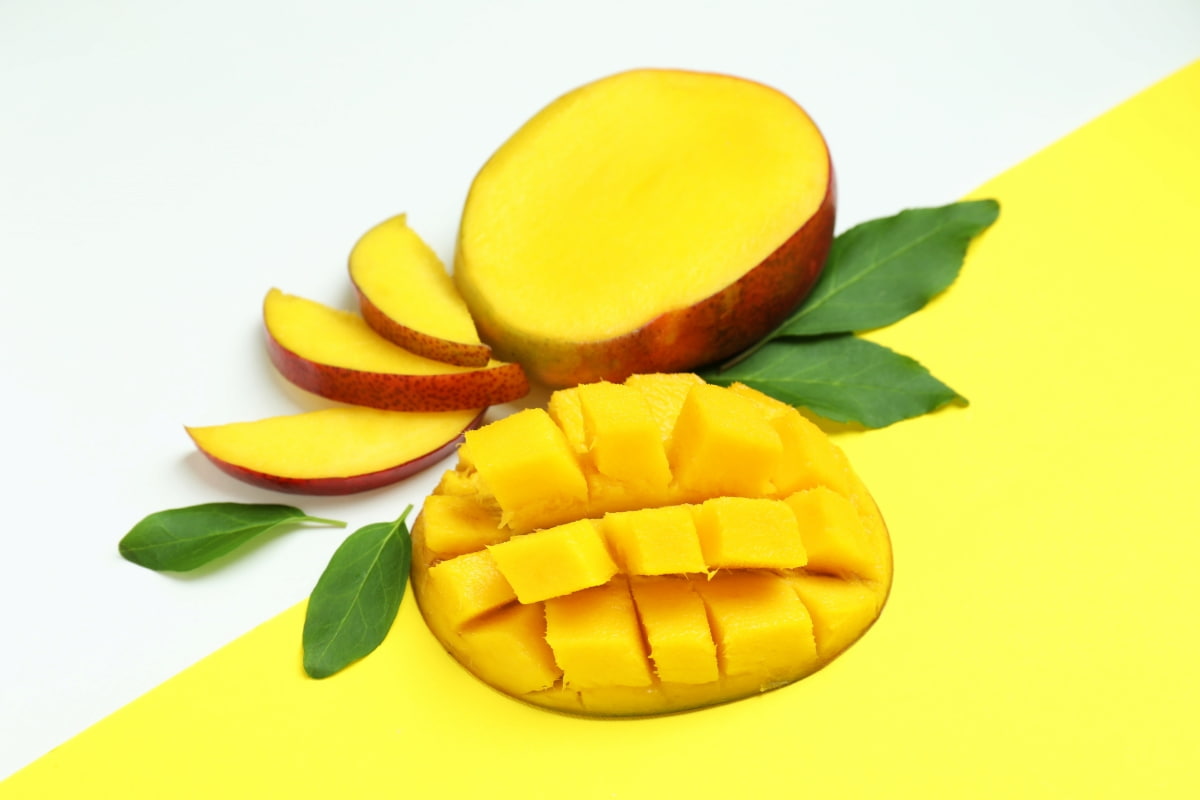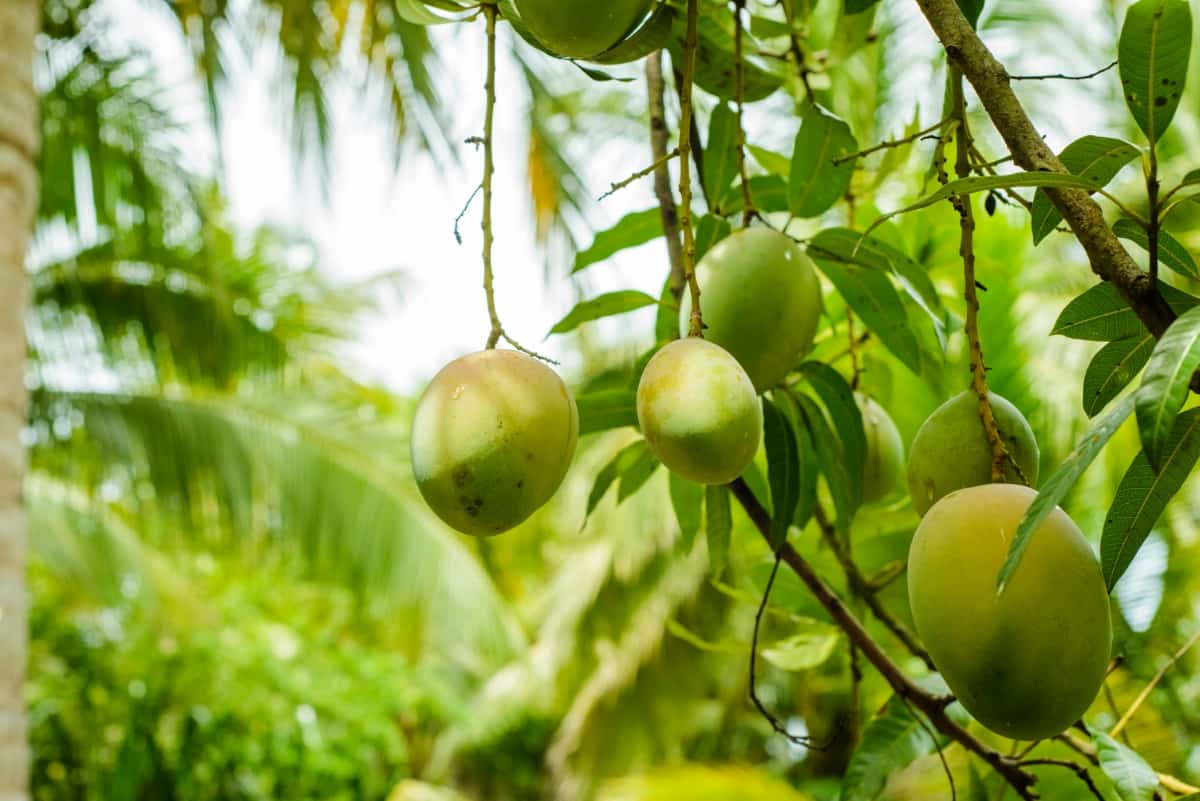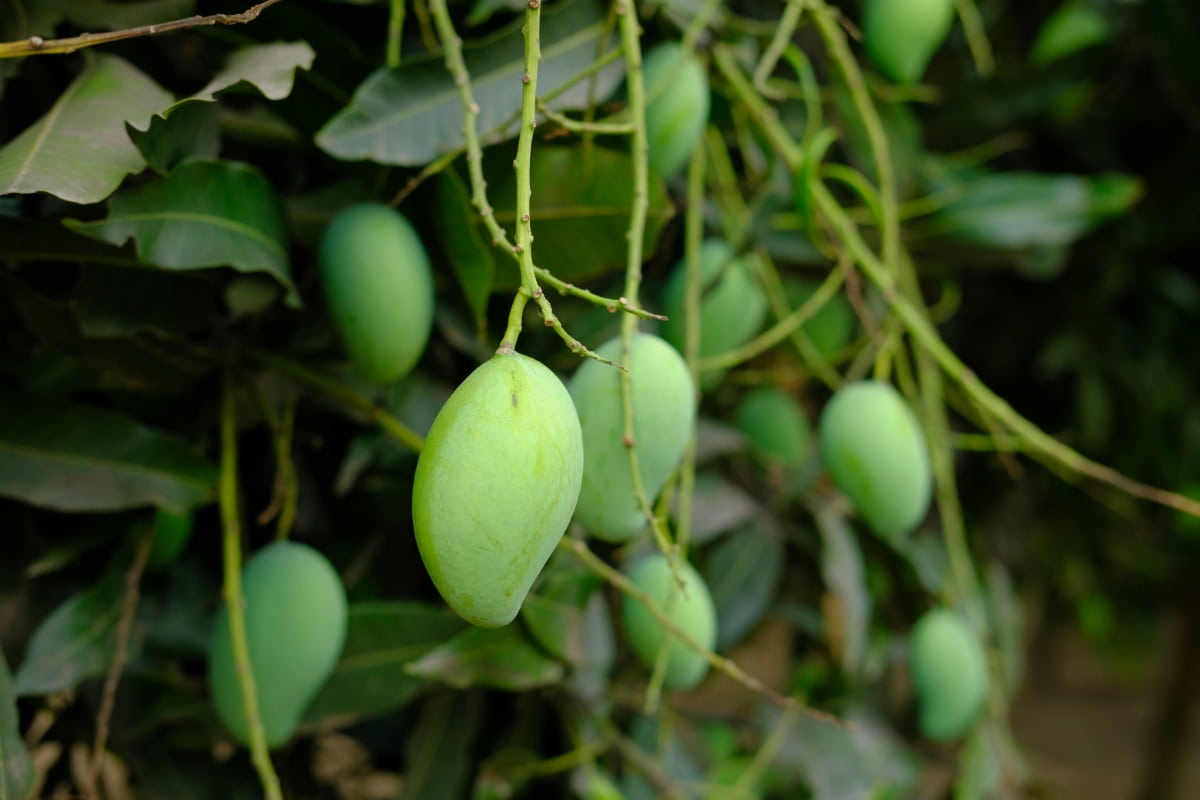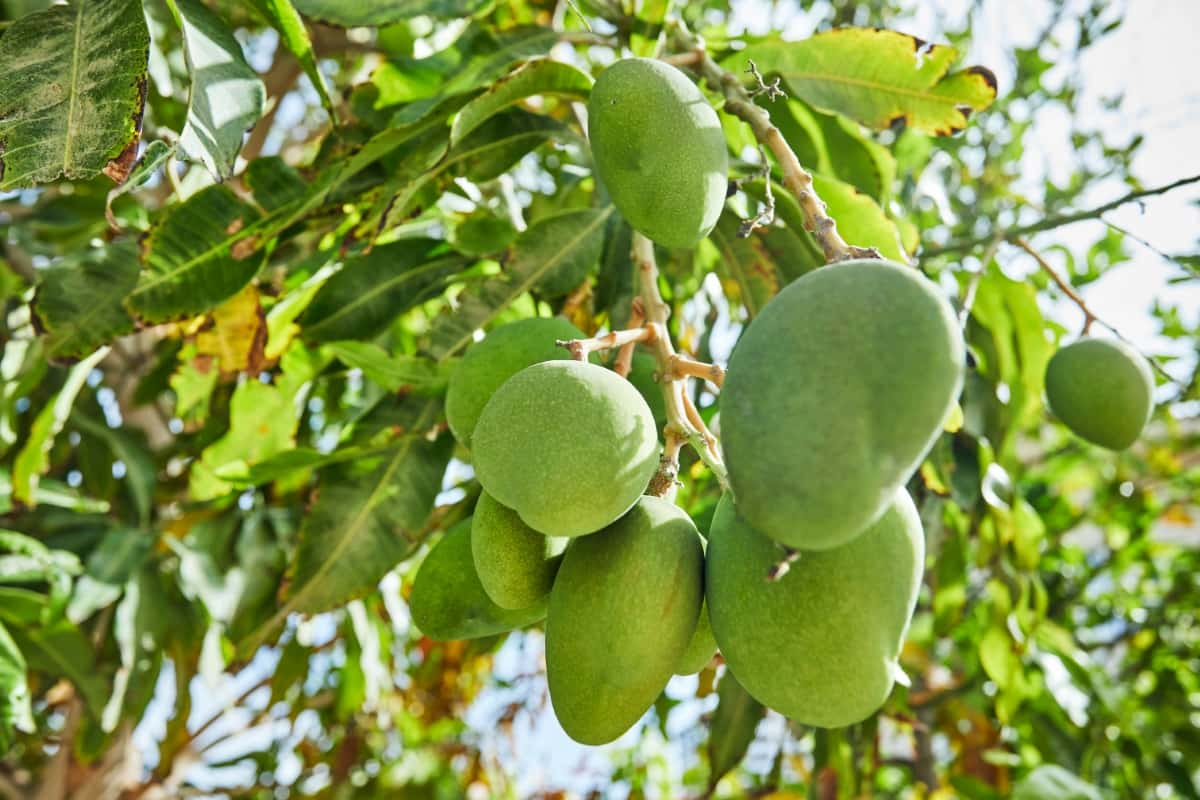Mango fruit rot is a common problem affecting Mango trees and can significantly damage the fruit. It is caused by fungal pathogens, such as Colletotrichum gloeosporioides and Botryosphaeria dothidea, which invade the fruit and cause it to decay. Additionally, preventing Mango fruit rot naturally promotes sustainable farming practices. By utilizing cultural methods such as proper pruning techniques and regular inspection of fruits, farmers can minimize the risk of rot without relying on synthetic substances.

How to Prevent Mango Fruit Rot Naturally
Causes and the Signs
Mango fruit rot is a common problem that can devastate your precious Mango crop. The signs of Mango fruit rot are easy to identify. Infected fruits may develop dark spots or lesions on the surface, which gradually expand and become sunken. A white powdery substance may appear on the affected areas as the disease progresses. Eventually, the entire fruit may shrivel up and turn brown or black. Signs of Mango fruit rot are easily identifiable.
Look for dark spots or lesions on the fruit’s skin, which may expand over time. When a Mango is affected by fruit rot, it develops dark spots or patches on its skin. As the disease progresses, these spots become soft and mushy, eventually spreading throughout the fruit. The flesh inside turns brown or black and emits an unpleasant odor. By preventing Mango fruit rot naturally, farmers can improve their economic sustainability. Healthy Mango crops yield higher returns in terms of market value due to their superior quality and longer shelf life.
Use Natural and Organic Methods
To start, make sure you practice good sanitation in your orchard or garden. Remove fallen or decaying fruits, which can serve as breeding grounds for disease-causing organisms. Keep the area around your trees free from weeds and debris, which can harbor pests and pathogens. Regularly trim away dead or diseased branches to prevent the spread of fruit rot infection.
Proper air circulation and sunlight penetration are crucial for maintaining healthy trees and reducing the risk of fruit rot. Natural fertilizers can also help strengthen your plants’ defense mechanisms against diseases like Mango fruit rot. Organic composts enriched with beneficial microorganisms provide essential nutrients while promoting a healthy soil ecosystem.
Environmental Factors Impact
The main environmental factor that impacts Mango fruit rot is temperature. High temperatures create favorable conditions for the growth of fungi and bacteria that cause fruit rot. Additionally, fluctuations in temperature can weaken the plant’s defenses, making it more susceptible to infections. Humidity levels also influence Mango fruit rot. High humidity provides an ideal environment for fungal spores to germinate and infect the fruits.
Proper drainage is essential in preventing waterlogged soil, which can promote root diseases that may eventually lead to fruit rot. Implementing mulching techniques helps conserve soil moisture while avoiding excessive saturation. Sunlight exposure plays a role in controlling Mango fruit rot. Sufficient sunlight helps dry out foliage and reduces moisture levels on the tree canopy, minimizing disease incidence.
Managing the Soil is Crucial
Soil plays a vital role in providing essential nutrients to plants, and healthy soil can help strengthen the immune system of Mango trees, making them more resistant to diseases like fruit rot. To begin with, it’s important to maintain proper drainage in the soil. Excess moisture can lead to fungal growth and increase the risk of fruit rot. You can minimize this fruit rot risk by ensuring water doesn’t accumulate around the roots.
In case you missed it: How to Grow Nam Dok Mai Mango: A Step-By-Step Guide to the Tasty Thai Yellow Variety

Effective Practices
Proper pruning and canopy management are crucial in preventing Mango fruit rot. Regularly remove dead or diseased branches to prevent the spread of infection. Maintaining good hygiene in your orchard is essential. Additionally, avoid over-watering your Mango trees as excess moisture promotes disease development.
Furthermore, practicing crop rotation can help reduce the risk of Mango fruit rot. Avoid planting susceptible crops near your Mango trees, as this increases the chances of disease transmission. Promoting biodiversity within your orchard can have a positive impact on pest control. Encouraging beneficial insects helps keep populations of pests under control naturally.
Helpful Microorganisms
Beneficial microorganisms, such as certain strains of bacteria and fungi, help establish a balanced ecosystem in the soil surrounding Mango trees. They create an environment that suppresses harmful pathogens responsible for fruit rot. When introduced into the soil, these helpful microorganisms form symbiotic relationships with the roots of Mango trees.
Biocontrol agents like Trichoderma spp., Bacillus spp., and Pseudomonas spp. are commonly used to fight against fruit rot in Mango orchards. In addition to suppressing pathogens directly, some helpful microorganisms also stimulate plants’ defense mechanisms against diseases like fruit rot. They trigger immune responses within Mango trees, making them more resilient and resistant.
Organic Fungicides Role
The most popular organic fungicides used to control Mango fruit rot are copper-based products. Copper has been used for centuries to treat various plant diseases, including fungal infections, effectively. Another organic fungicide that is commonly used is sulfur-based products. It works by inhibiting respiration in fungi cells, ultimately leading to their death. In addition to these specific organic fungicides, general-purpose biological controls are available on the market.
Improve Plant Immunity
By strengthening these natural defenses, you can enhance your Mango tree’s ability to fight off fruit rot. It is crucial to provide proper nutrition and care to improve plant immunity. Make sure your Mango tree receives adequate sunlight, water, and nutrients. A healthy and well-nourished plant is better equipped to resist infections.
Furthermore, practicing good pruning techniques can help improve plant immunity. Another method to boost immune response is using organic foliar sprays containing ingredients such as neem oil or seaweed extract. These products stimulate the production of natural compounds within the plants that act as defense agents against various diseases, including fruit rot.
Integrated Pest Management
Integrated Pest Management (IPM) is a holistic approach to managing pests that focuses on long-term pest prevention and minimal environmental impact. By regularly inspecting Mango trees for signs of fruit rot or other diseases, farmers can take early action to prevent the spread and minimize damage.
In case you missed it: How to Prune a Mango Tree and When to Prune Mango Trees

This includes removing infected fruits promptly to reduce the risk of further contamination. Furthermore, using organic fungicides derived from natural sources can aid in preventing Mango fruit rot effectively. These eco-friendly alternatives have proven efficacy against fungal pathogens without harming beneficial organisms or leaving harmful residues on fruits.
Enhance Biodiversity
Introducing diverse plant species in and around your Mango orchard helps attract beneficial insects that prey on pests like fruit flies or aphids, which can contribute to fruit rot. Flowers such as marigolds, sunflowers, or lavender attract pollinators and beneficial insects. Additionally, consider planting companion plants that have been shown to repel pests or provide natural barriers against diseases.
Maintaining a healthy soil microbiome is also crucial for preventing Mango fruit rot naturally. By implementing these practices and embracing biodiversity within your orchard, you create a harmonious environment where nature becomes an ally in controlling Mango fruit rot naturally.
In case you missed it: How to Increase Mango Flowers: Encouraging Techniques, Tips, and Effective Methods

Conclusion
Mangoes are delicious and nutritious fruits loved by many, but unfortunately, they are susceptible to fruit rot. This fungal disease can devastate Mango trees and their fruit, leading to significant losses for farmers. Fruit rot not only affects the quality of the Mango but also reduces its shelf life. Preventing Mango fruit rot naturally offers a range of benefits, including environmental friendliness, improved plant health, potential cost savings, and support for sustainable agriculture practices.
- Feed Your Flock for Less: Top 10 Tips to Save on Chicken Feed
- Ultimate Guide to Ossabaw Island Hog: Breeding, Raising, Diet, and Care
- Hatching Answers: The Top 10 Reasons Your Chickens Aren’t Laying Eggs
- Eggs and Economics: Breaking Down the Cost of Raising Backyard Chickens
- Defend Your Greens: Proven Methods to Keep Iguanas Out of Your Garden
- Ultimate Guide to Cinnamon Queen Chicken: A Comprehensive Guide for Beginners
- Ultimate Guide to California Tan Chicken: Breeding, Raising, Diet, Egg-Production and Care
- Ultimate Guide to Marsh Daisy Chicken: Breeding, Raising, Diet, and Care
- 10 Types of Chicken Farming Businesses You Can Start for Profits